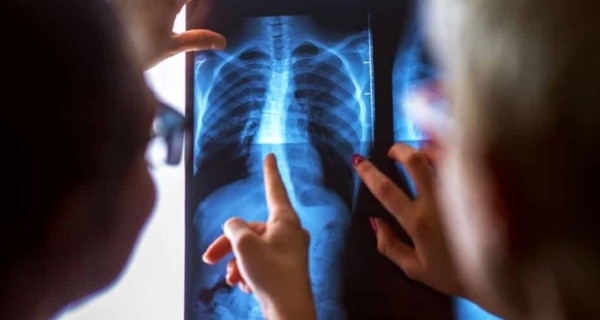Yes, scoliosis exists in adults, but with the ageing population it’s likely to become even more prevalent in future years. There is often a large focus on bracing for adolescents (1, 2) but not so much for the potential of bracing as a treatment for adults with scoliosis. The goals of treatment for adults are often very different to that of adolescents. Adolescents with idiopathic scoliosis often need to be focused on prevention of progression (1, 2) but with adults the focus is often on pain and function (3).
What does the research say?
Palazzo and colleagues conducted a retrospective review of the medical records of patients 18 years or older with a progressive non-operated idiopathic or degenerative lumbar scoliosis, or with an S curve with a progressive lumbar curve. Progression was
defined as a variation in Cobb angle 10 degrees or more between the first and last radiograph before bracing (3). They observed that there was a breakpoint of the curve progression at the time of bracing. In other words, the mean rate of progression was significantly higher for these patients prior to bracing, compared to after bracing. This suggested the effectiveness of custom moulded lumbosacral orthosis in slowing down the progression of adult scoliosis.
What don’t we know?
The jury is still out on the ideal duration for brace wear for adults. In adolescents, we most often need to recommend full time bracing for those with idiopathic scoliosis, particularly if there is a lot of growth left (1, 2). However for adults the ‘more is better’ approach has not been proven. In the clinic we have found it is best to consider each patient individually, but generally about four to six hours of brace wear per day* seems to be appropriate in many cases.
*Palazzo and colleagues incorporated patients into their study who were wearing their brace six or more hours per day (3).
Should adults with scoliosis use a brace?
In some cases, yes. Scoliosis specific exercises may have a place too, and can often be the first step to take for these patients. However, if you have a very unstable and progressive curve, then bracing may be a very viable option for your patient. If you have a patient you are concerned about, feel free to contact us on our professional portal where we offer free x-ray reviews.
References:
- Weinstein, SL., Dolan, LA., Wright, JG. and Dobbs, MB. (2013). Effects of Bracing in Adolescents with Idiopathic Scoliosis. New England Journal of Medicine. 369:1512-1521 DOI: 10.1056/NEJMoa1307337.
- Negrini, S., Donzelli, S., Aulisa, A.G. et al. 2016 SOSORT guidelines: orthopaedic and rehabilitation treatment of idiopathic scoliosis during growth. Scoliosis 13, 3 (2018). https://doi.org/10.1186/s13013-017-0145-8
- Palazzo, C., Montigny, JP., Barbot, F., Bustle, B., Vaugier, I., Fort, D., Courtois, I., and Marty-Poumarat, C. (2017). Effects of bracing in adults with scoliosis: A retrospective cohort study. Archives of Physical Medicine and Rehabilitation. 98: 187-190.


